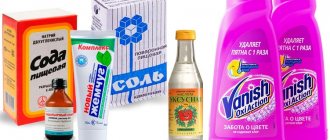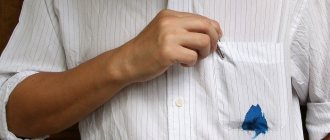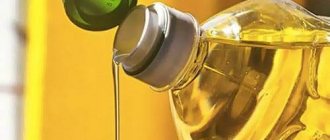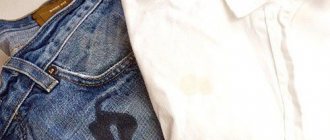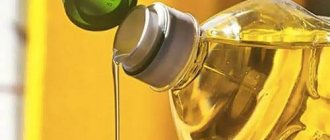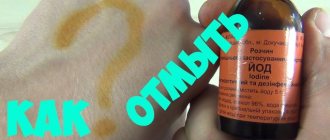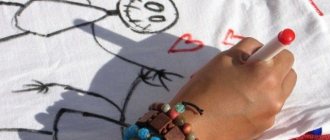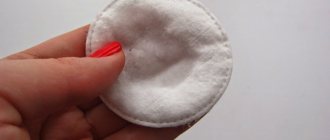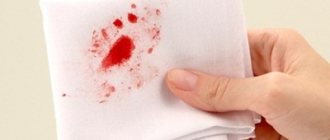How to remove blue from clothes
The most common oral disease is stomatitis.
To treat this disease, many doctors recommend blue to the patient. This is not the product that our grandmothers and mothers added to white paint when whitewashing ceilings. We are talking about a strong antiseptic that can neutralize pathogenic foci of stomatitis. And so you bought beautiful things in the online clothing store for women with the taste of Alfasale, but accidentally stained them with the ill-fated blue. What to do?
This medication has a distinct blue color. And if it accidentally gets on your clothes, a bright spot appears, which can ruin the overall appearance of the product. At the same time, you shouldn’t be too upset, since using ordinary improvised means you can easily remove any contamination.
An excellent remedy in the fight against bright spots is hydrogen peroxide. It is recommended to use it only for processing light-colored items. Peroxide has a bleaching effect, which can cause even more damage to dark-colored items.
The liquid from the bottle is mixed with water in a 1:1 ratio. The item is placed in the resulting solution and left for approximately 30 minutes. Next, the clothes are washed in cold water. If traces of bluing remain, the procedure must be repeated, increasing the dose of peroxide.
Preventive actions
To prevent powder stains from remaining on your clothes after washing, you should follow the following recommendations:
- Using the additional rinse function will completely rinse the cleaning composition from the surface of any material.
- When choosing a washing powder, consider the type of fabric. For example, woolen items cannot be washed using universal detergents.
- For hard water, use conditioner.
- When washing, observe the proportions and do not sprinkle the powder “more generously” than necessary.
- It is better to avoid using universal products, which can cause bluish stains.
Before using any substance to remove traces of powder, you need to test it on an inconspicuous area of clothing (inner seam, pocket). And only if there are no undesirable consequences, apply it to fabric.
hozotsek.ru
How to wash diesel fuel from clothes: examples of products, which include household cleaners and powders, as well as traditional methods - using salt, soda, alcohol and other means. Useful tips for removing diesel fuel.
Numerous store-bought stain removers can also be used to remove diesel from clothing. The only point to consider is that this method will have to be repeated several times.
The most common oral disease is stomatitis. To treat this disease, many doctors recommend blue to the patient. This is not it
And so you bought beautiful things in the online clothing store for women with the taste of Alfasale, but accidentally stained them with the ill-fated blue. What to do?
Citric acid in the fight against bluing stains
You will need 1 teaspoon of citric acid. It must be dissolved in one glass of water. The resulting mixture is heated. The hot solution is applied to the stain and gently rubbed in using a cotton pad. Blue tends to spread, so movements should be directed from the edge to the center of the stain.
Afterwards the clothes are left for approximately 10 minutes. Afterwards the product is washed manually or in an automatic machine. Citric acid is effective for both colored and plain clothes. It does not highlight shades and does not have a detrimental effect on fabric fibers.
If the stain is old, it will be much more difficult to deal with. There have been cases when citric acid did not give the desired result. In such a situation, it must be strengthened with special means purchased in the store. To clean white materials, special bleaches are used, and for colored materials, stain removers that do not contain chlorine are used. If we are talking about delicate materials, then it is better to dry clean them. Specialists will select the most gentle means and help you get rid of blue stains.
Using the washing machine
If allowed, bluing for washing clothes can be used in the washing machine. You can also do coloring. The work is performed in the following sequence:
- You should check whether there are any dense lumps in the liquid dye, and the powdered dye should be diluted with water. Grains of sand can ruin clothes and leave bright stains on them.
- The product is added to the drum of the machine. If the instructions say to add soda or salt, then do so. This is required to fix the color.
- You need to choose an intensive wash if the fabric is thick. And the temperature is 90-95 degrees. The cycle is long.
- Do not use washing powders, rinse aids and other products.
- After washing, jeans should be placed in a basin to soak in vinegar, which will fix the color.
- To prevent other clothes from getting dirty, the car is turned on at idle speed and then wiped from the inside. It is advisable to add a small amount of bleach to the powder compartment.
When using blue, you need to consider that:
- A quality product will not stain your hands or bathtub. If traces of it remain, there is a possibility of damage to the item.
- Blue is not considered a permanent dye - it fades with each wash, so repeated treatments are required. For lasting results, you need to use special paints for materials.
Each item needs to be processed separately if you want to get an excellent result. It is necessary to adhere to the rules of the procedure, observing the time period for painting.
The dyes have good resistance to external factors, so you can safely wash them. But you should not prolong the procedure or change the temperature. It is advisable to wash the item by hand with water at 40 degrees. Thus, blue can be used to color things. It is usually used for jeans. Even an old thing takes on a new look.
Laundry Specialist
visibility
3881 views
comment
2 comments
The most common oral disease is stomatitis. To treat this disease, many doctors recommend blue to the patient. This is not the product that our grandmothers and mothers added to white paint when whitewashing ceilings. We are talking about a strong antiseptic that can neutralize pathogenic foci of stomatitis.
This medication has a distinct blue color. And if it accidentally gets on your clothes, a bright spot appears, which can ruin the overall appearance of the product. At the same time, you shouldn’t be too upset, since using ordinary improvised means you can easily remove any contamination.
An excellent remedy in the fight against bright spots is hydrogen peroxide.
It is recommended to use it only for processing light-colored items. Peroxide has a bleaching effect, which can cause even more damage to dark-colored items.
The liquid from the bottle is mixed with water in a 1:1 ratio. The item is placed in the resulting solution and left for approximately 30 minutes. Next, the clothes are washed in cold water. If traces of bluing remain, the procedure must be repeated, increasing the dose of peroxide.
Baking soda: a great stain remover
Using baking soda, you can remove almost any stain, including bluing. However, this product is very different from professional whitening products. It does not contain chemicals harmful to the human body. Baking soda can be used to remove stains from babies' clothes; it will not harm their health. In addition, white powder has a low cost, and is in the arsenal of almost every housewife.
To get rid of traces of blue on clothes, you need to perform the following manipulations:
- The contaminated product is laid out on a hard horizontal surface so that the stain is clearly visible.
- Afterwards, powder is poured onto the problem area and rubbed in well.
- The item is left for approximately 20 minutes.
- Afterwards, the remaining soda is removed using a brush with natural bristles.
- The product can be washed manually or in an automatic machine (it all depends on the manufacturer’s recommendations).
After this treatment, some things become a little rough. Vinegar will help restore them to their original appearance. This product is added to the final rinse water.
Composition and features of using liquid stain remover
Vanish, available in powder form, contains several ingredients. In addition to oxygen bleach, as well as nonionic and anionic surfactants, it contains enzymes, zeolites and flavoring. The product copes with various stains and helps out many young mothers trying to remove dirt from soiled children's clothes.
We suggest you familiarize yourself with How to wear badges on clothes
When washing in a machine, pour the usual cleaning composition into the powder compartment and add “Vanish” (usually half a spoon is enough, if there is a lot of laundry and there are pronounced stains, add the whole one). The powder is also used for soaking: 4 liters of liquid will require 30 or 60 g, depending on the degree of contamination.
Having prepared the soap solution, soak the laundry and then wash it in the usual way. When the fabric is heavily soiled, take 2 glasses of water, dissolve a pinch of Vanish and apply to the surface. The material remains soaked for a maximum of 6 hours (colored fabric – an hour). Many housewives prefer to dilute the product in water to form a paste and apply it to the problem area, after which they put the product in the wash.
The product produced in liquid form is more affordable. It contains bleaching components in smaller quantities. This is also a very effective composition for removing a variety of contaminants. The components are oxygen bleach, surfactants, phosphates, citronellol, cinnamal and flavorings.
Vanish, in a liquid consistency, copes with traces left by brilliant green, paint, machine oil, iodine, wine, pomegranate juice, and perfectly removes grease. You can wash wool and silk items with it, but it is not suitable for clothes with metal and wooden fittings. When washing by hand, it is enough to use 100 ml of the composition.
The same norm is for an automatic washing machine, only the dose is divided into soaking and direct washing. To remove fresh dirt, you can immediately pour Vanish into the detergent compartment. With its help, you can soak up stubborn stains: just pour it on the stained area, and after 10 minutes wash the item.
How grandmothers dealt with bluing stains
Excellent and proven means that help get rid of blue stains in the shortest possible time are:
- Salt. This product is necessary not only for preparing delicious dishes. It is an effective remedy in the fight against various brightly colored stains. Salt is sprinkled onto the problem area and rubbed in gently. The stain will disappear before your eyes. Afterwards, the powder is shaken off and the product is washed in cool water. Using salt you can get rid of not only stains from bluing. It is effective in combating stains from wine, berries, blood, and sweat.
- Ammonia. This clear liquid is an integral attribute of our grandmothers' first aid kit. In addition to medicine, it is used in the household, it easily copes with various types of pollution, and bluing is no exception. A few drops of ammonia are added to the soap solution. Use a cotton pad to treat the problem area. This drug has a characteristic pungent odor. Therefore, the item must be rinsed thoroughly after treatment. In this case, you can use conditioner.
The blue stain is not as scary as it seems at first glance. It's very easy to get rid of it. The main thing is to follow all the recommendations correctly.
What is the best way to remove powder stains?
Users reading these lines have most likely encountered a problem and are hoping to remove a stain from an unsuccessfully selected or incorrectly applied powder, so it is necessary to take measures to save the product.
- Experts, when asked how to remove stains from washing powder, recommend using intensive rinsing as an initial measure. It doesn’t matter whether you do this procedure manually or trust the washing machine, but you should rinse in clean water without adding detergents. When loading clothes into the drum, you should use not one rinse cycle, but two or three.
- Soaking is also considered an effective method. Clothing affected by the powder is immersed in a container with warm water for half an hour, after which the product must be rinsed in several waters.
- If the stains cannot be removed, you will have to use an air conditioner, which will help soften the water, which will help get rid of light contaminants caused by the powder. When the conditioner is not at hand, you need to add a couple of teaspoons of soda to the rinse water for every 2 liters of water.
- The product is placed in a container with warm, clean water for half an hour. After 30 minutes, rinse the clothes thoroughly. If this does not help get rid of the stain, it is recommended to wash the item with dishwashing detergent.
- An effective solution is to apply an acidic solution to stains. To do this, dissolve a teaspoon of oxalic or citric acid in 200 ml of hot water and moisten the stain with the composition. A quarter of an hour after treatment, the mixture is removed with clean water.
Comments
November 30, 2021 at 12:04 pm
I didn’t even suspect that a bluing stain could actually be washed off. I tried store-bought products more than once, but the stain never completely came off. But it turns out you can use folk remedies, without extra costs. Of the suggested tips, I tried citric acid. Just dilute 1 spoon in water and apply to the stain. Then, as usual, I washed the item in the machine. There is no stain. Thanks for the useful article!
November 30, 2021 at 10:42 pm
How interesting! I always have citric acid to soften clothes when rinsing, I’ll try to use it for bluing, vanish is powerless here.
Using blue for linen
More effective coloring and refreshment of natural linen can be achieved thanks to the instructions for use of this drug. In the description, pay attention to the procedures in which this substance is used. Certain types of blue are used during washing, some varieties - during the main or final rinsing or soaking process.
It doesn’t matter whether you are going to dye clothes or simply turn your linen blue, the main thing is to use a material based on natural cotton or linen fibers. In order to ensure the quality of the product and its correct dilution, you can initially experiment on a small piece of fabric.
Most often, classic shades of jeans, blue and light blue underwear, and less often white fabric are dyed blue. In order to get a good tinting result, use water-soluble bluing for rinsing. Insoluble may give unwanted divorce). Before use, dry or liquid coloring pigment is thoroughly dissolved in water until a uniform color without clots is obtained. To obtain an ideal solution, the liquid is often filtered through several layers of gauze.
The dyeing process should only be done with clean, washed and rinsed laundry. If the item is large enough, it is best to paint it in the bath. The container is filled with water so that the water completely covers the material. The dye solution is poured into the bath, and the color scheme is regulated by both the concentration of the solution and the volume of water in the vessel. The linen is lowered into the bathtub in a straightened form without folds or bends and kept for a certain amount of time. Good color fixation is achieved after 1-2 hours, but in the instructions for use you can find a more detailed description of the ratios of types of fabric and tinting time. After this, the item is rinsed in plain water or water mixed with vinegar and hung flat to dry.
To eliminate the yellowish tint on white linen, you can use a weak blue solution. Ultramarine gives the material a slightly noticeable bluish tint, which makes the fabric visually whiter.
Manual method
With the manual method, the laundry is blued at the time of the last rinse. To do this, prepare a solution of the dye in the ratio: 0.3 g of powder per 10 liters of water or 2/3 tsp. a paste-like substance or 1-2 dragees are placed in a tightly tied gauze or fabric bag and dipped in water prepared for rinsing clothes. The bag of pigment is soaked until the desired uniform shade is obtained. Liquid blue is dissolved at the rate of 3-4 drops of the substance per 1 liter of cool water. After this, the laundry is lowered into the water (preferably not all at once, but one item at a time) and held for 3-5 seconds.
In the washing machine
Modern bluing agents can be used when washing and dyeing materials and in automatic washing machines, if this is indicated on the preparation. With the mechanical method, it is also necessary to check the liquid dye solution for the presence of unnecessary clots, and thoroughly dissolve the powdery substance in water and remove excess grains of sand, which can lead to damage to clothing. Blue is added to the drum or compartment for cleaning solutions. If the description of the coloring agent recommends adding salt or soda, then you should heed this advice. This is necessary to fix the color. Depending on the density of the fabric, you need to choose the type of washing. This can be intensive washing, cotton processing or washing at 90-95 degrees Celsius. After automatic washing, it is advisable to place the fabric in a container with a vinegar solution to fix the color. To prevent other items from becoming stained when processed in the washing machine, the equipment is run empty and a little bleach is added to the powder compartment. After manipulations, the inside of the machine is wiped dry.
- Blue is needed for those who prefer simplified processing methods to a variety of toxic bleaching powders.
- A high-quality product does not stain containers or the skin of your hands.
- Blue is not a permanent dye. Each subsequent wash will wash out the color pigments, so re-blueing should be done from time to time.
- To obtain a good result, each item must be processed separately.
- Table salt added along with the blue when rinsing will help keep the blue color longer.
- To achieve the desired result, it is better to first practice on old things.
- Always read the instructions for use of the dye, because depending on the manufacturer, release form and composition, dyeing may have different results.
- Blue blue, which contains starch, should be boiled after dilution and then strained.
- Do not try to replace the bluing with a blue item of clothing when washing white clothes in the machine, as this may lead to unpredictable results.
- The chemical should be stored in a tightly closed container out of the reach of children.
Blue is a fairly cheap substance that can replace many expensive powders with a whitening effect. It is also an indispensable product for adding freshness to linen and richness to blue and blue clothes. Also, such a simple, popular substance as blueing can serve as a source of inspiration for creating unusual shades or patterns when dyeing.
How to remove faded stains with home remedies, and what to do to prevent them from fading in the future?
Reading time: 3 minutes
Not all housewives know what to do if a new expensive item fades during washing. Of course, this is a rather serious problem, and it will be difficult to remove such stains, but it’s still worth a try.
And we will tell you about the most effective ways to get rid of faded stains.
The content of the article:
What not to do with a resin stain
- There's no time to waste. The sooner you start removing the resin, the greater the chance of saving the item.
- Don't rub stains. It will not be possible to get rid of the viscous substance in this way; it will only be spread over a larger area.
- Do not place items with similar stains in the same basket as dirty laundry. You need to remove the stains and then send the clothes to the wash.
Do not use chemicals without first checking whether they are suitable for the material.
- Silk items should not be cleaned with acidic detergents or solvents.
- Alkaline compounds are not suitable for woolen items.
- Colored clothes can be damaged by bleach - a discolored stain will appear.
Try to prevent, rather than think about how to remove powder from clothes
In order not to rack your brains over the question of how to remove powder stains, you should be careful about the washing process, because it is always better to prevent than to remove stains later. To do this you need:
- Use only a product intended for this type of fabric, strictly following the manufacturer’s recommendations in the instructions on the package. Such measures will help avoid stains and other problems arising from the wrong choice of clothing products.
- Do not use products containing multi-colored granules for white products, but give preference to liquid formulations. Then the question of how to remove stains from washing powder granules from snow-white items will not worry you.
- Rinse the product thoroughly. If washing is done in an automatic machine, then it is necessary to set the intensive rinse mode.
- Use conditioners for rinsing things, reducing water hardness, which helps remove detergents from the fibers of the fabric.
Proper preparation
To clean clothes you need to prepare in advance:
- spatulas (wooden or metal);
- iron (required for heat treatment) or freezer;
- solvents (gasoline-containing products, acetone, alcohol-containing substances, etc.);
- napkins or disposable paper towels;
- cotton pads;
- other laundry detergents.
First you need to try to remove the resin from clothing mechanically, scraping it off with a spatula. You need to clean it off very carefully so that it does not eat into the fabric.
The method is not suitable for delicate fabrics (silk, fine knitwear, etc.).
You also need to prepare the material itself:
- clean the surface from dust with a clothes brush to avoid dirty marks;
- tear off the lining from the outer clothing so that only the soiled fabric is affected;
- stretch the soiled part of the clothing onto a wooden block or plastic wrapped in paper towels;
- Wet a clean cloth around the stain with water and sprinkle it with talc to prevent the resin from spreading further.
Methods for removing resin from clothes
Using an iron can only remove the bulk of the resin, but it will still leave a mark on the material. To remove it, you will need solvents.
- Place paper towels folded in several layers on top and bottom of the stain.
- Run the iron over the dirty area several times.
- Change towels that have absorbed melted material.
- Wash the treated area with soap.
Freezing
- Pack soiled clothing in a plastic bag and place in the freezer for at least half an hour.
- If you cannot use the freezer, place the item between two ice packs.
- Once the resin area has hardened, press the material together with your hands. The resin will begin to crack.
- Remove small pieces with a sharp object, such as a knife. Do not damage the fabric.
Heat treatment of delicate fabrics
Before heating or freezing clothing, read the label carefully. Delicate materials (silk, satin, chiffon, etc.) will not withstand high temperatures. Heat treatment is more suitable for dense fabrics.
Vegetable oil for leather products
Fats in oil destroy resin well.
- Soak a piece of cotton wool generously with vegetable oil.
- Treat the damaged area with it.
- After 20–30 minutes, wash with laundry soap.
After oil treatment, wipe the area with a sponge soaked in dishwashing liquid - it will degrease the fabric.
On denim
You can remove resin from denim fabrics with an iron, but it’s better to use cold.
- Place the bag of dry jeans in the freezer for 2-3 hours.
- Apply an ice pack to the stained area from the inside out.
- After freezing, crumble the adhered substance with a hard object.
- Brush off crumbs with a clothes brush.
Starch paste
To clean using this method, you need to prepare a paste:
- Pour the starch into a small container, add the same amount of ammonia to it, and mix.
- Apply the paste to the contaminated area and leave until completely dry.
- Clean the area with a clothes brush. The dry paste will be removed along with the resin.
If you don’t have ammonia, you can simply sprinkle starch on the contaminated area and leave it for 1 hour. Afterwards, the starch is cleaned with a brush - and the fabric can be washed.
The method is also suitable for delicate fabrics.
Soda
Carbonated drinks will help soften and remove the resin. To do this you need:
- Pour the carbonated drink into a bowl.
- Place contaminated clothing in it.
- Leave for 3-4 hours.
- Then scrub the stain with a clothes brush.
Solvent
The resin can be washed off with a regular solvent, acetone or nail polish remover.
- Soak a cotton pad or rag with solvent.
- Rub the stain gently until it disappears.
Stain remover
Stain remover will only help if the stain is fresh.
- Apply stain remover to the stained area.
- Rub it into the stain.
- Leave for the time specified in the instructions for the product.
- Launder the item.
Turpentine
- Pour turpentine generously over the stained area.
- When the resin has softened, blot it with a paper towel, pressing down firmly on the material.
- Afterwards, rinse the clothes in cold water and put them in the washing machine.
After treating with turpentine, add conditioner to the powder to eliminate the odor.
Petrol
For colored and delicate fabrics, cleaning with gasoline is not suitable. For dense fabrics:
- Soak a cotton pad in gasoline and wipe the resin marks with it.
- Afterwards, keep the clothes under running cold water.
- Machine wash with conditioner to remove odors.
Medical alcohol
The method is suitable for colored and delicate materials: medical alcohol does not destroy their fibers.
- Soak a cotton pad generously in medical alcohol.
- Rub it onto a fresh resin stain.
- When the mark disappears, wipe the cloth with alcohol again.
- Wash the item as usual.
Ammonia
Before using ammonia, you need to check the reaction of the fabric from the wrong side.
- Soak a cotton pad with ammonia.
- Wipe the affected area from the edges to the center.
- Change discs as often as possible.
- Then rinse the fabric and put it in the wash.
How to remove blue stains from powder
Indigo carmine, some aniline dyes or Paris blue, which are part of universal powders, leave difficult to remove marks on fabric. Often, after pre-soaking the laundry or after washing, greenish or bluish stains are found, and in some places small blue “stars”. The resulting pollution is the result of point exposure to colored granules containing blue. For many housewives this becomes a problem. Puzzled by the question of how to remove the blue stain from the powder, they search for suitable methods through trial and error. You don't have to go straight to dry cleaning. If you don’t waste time, you can solve the problem yourself at home. How to remove blue stains from powder? You can eliminate the effects of bluing crystals in the following ways:
- Rinse immediately with conditioner or in clean water, avoiding drying the product with blue spots from granules.
- Colored items can be washed at a temperature of 40-50 degrees without resorting to detergents.
- Hand washing of clothes that have been tinted in some places is recommended with the addition of laundry soap and vinegar. This will help get rid of the green or blue areola on the fabric. But after that you need to rinse thoroughly.
- If the fabric is able to withstand high temperatures, then boiling water is gently poured onto the fresh stain in a stream, which allows you to dissolve the blue stain. But this method cannot be used on old stains, because this will only worsen the problem.
Whatever option you choose, you should pay attention to the fabric composition, colors and recommendations for caring for the product.
Nuances when clearing
Fresh stains
If you remove a resin stain immediately after it appears, you can use:
- vegetable oil and dishwashing liquid (to degrease the material);
- medical alcohol;
- soda (it’s better to take highly carbonated Coca-Cola);
- turpentine.
Old resin
To remove old resin marks, chemicals and concentrated products are used. The denser the fabric, the more powerful the cleaning agent will be needed to clean it. You can start with ammonia.
Gentle stain removers are suitable for delicate fabrics.
Epoxies
Epoxy is distinguished by its heat resistance and strength.
- First, scrape off as much resin as possible with a spatula.
- Then fill the contaminated area with solvent, acetone or ammonia.
- After waiting for 15–20 minutes, start washing.
Bitumen
You can try to remove bitumen using the traditional method:
- Mix clay, starch, turpentine and ammonia in equal parts.
- Apply to the bitumen trace.
- When the powder dries, brush it off with a brush.
Removing stains and odors after cleaning
After cleaning with chemicals, they leave behind a pungent odor and stains. But there are methods that will remove them from clothes.
Mustard
- Dilute mustard powder with water and apply to the treated area.
- When the mixture dries, soak the item in warm water.
- After an hour, wash with detergent.
Hydrogen peroxide
Yellow stains may remain on white items after cleaning. To remove them, use hydrogen peroxide: moisten a cotton pad with it and wipe the spots. After this, the clothes are washed.
Soda with salt
Soda and salt are mixed in equal parts and sprinkled on the damaged area, moistened with warm water. Gently rub in the composition, and then soak the clothes and wash them with powder.
How to remove powder stains on white
The previously discussed methods are relevant for colored products, but how to remove blue stains from powder on snow-white fabric? It is worth trying to bring wardrobe items in light colors that are resistant to bleach into proper shape using products from supermarket shelves, where a number of stain removers are available at various prices. Today it is not a problem to eliminate stains, and when asked how to remove blue stains from powder on white clothes, the developed chemical industry makes it possible to choose the appropriate product from a huge variety of options. You just need to strictly follow the instructions for use. If it is not possible to use advanced household chemicals, then when asked how to remove powder stains on clothes at home, experts answer:
- It is necessary to add a teaspoon of ammonia to half a glass of water and treat the stain with the resulting mixture in several stages until it completely disappears.
- If you don’t know how to remove blue stains from powder on white things, then try diluting a tablespoon of hydrogen peroxide in 70 ml. Use this solution to treat the contaminated area of the fabric, leaving the mixture for 10 minutes, after which you should carefully rinse with clean water.
- If you are at a loss as to how to remove powder stains after soaking on a white fabric, then try spotting the bleach on the “stars” that have formed.
With a variety of products on store shelves and recommendations from experts, the question of how to remove powder stains is easily resolved. Using these tips, housewives will be able to restore their clothes to their former cleanliness and freshness. And careful attention to detergents and strict adherence to instructions will eliminate the need to select the right method for removing stains.
Household blue is considered a mixture of dye and starch, sold in powder or liquid form. The substance is usually used as a bed linen freshener. Linen bluing allows you to make linen and cotton shirts white. It is also used for tinting materials. More details about this tool are described in the article.
Blue for linen is divided into 2 types: with soluble and insoluble dye. The second option is considered cheap; it is used only when refreshing products. Soluble - for dyeing clothes.
How to remove various stains from clothes?
This is actually a very big question because... There are a huge number of both clothes that require special handling conditions and stains, each of which is removed differently. You don’t have to think too much about it because there are various stain removers that successfully cope with stains, but what to do if it is not always possible to use chemicals or if you first want to try to remove everything on your own?
We will not go into much detail or describe anything, but will only write what stains and how to remove them. So, let's begin: 1. Oil paint stains are best removed with a mixture of gasoline, acetone and turpentine in equal parts. 2. Fresh ink stains on clothes are quickly removed with milk. 3. Wipe damp stains on the fabric with a cloth soaked in curdled milk whey. 4. Black velvet is cleaned first with a brush slightly moistened with kerosene, and then with a dry, clean brush. Allow the dress to air so that the smell of kerosene disappears, and straighten it by holding it over the steam. 5. To clean suede shoes, wipe them with a cloth moistened with water and ammonia, and then go over them with a rubber brush. 6. Rust stains on white fabric are removed with a solution of hydrosulfite (1 part to 10 parts water). Rust is also removed with oxalic acid, but its effect on the fabric should not be long-lasting. 7. To remove rust from colored fabrics, use a mixture of equal parts glycerin and grated soap. Add a little water to this mixture to obtain a homogeneous mass and cover the stain with it for a day, then wash it off with water 8. A solution of table salt (a teaspoon of salt in 2 cups of water) will help against such a popular stain on children's clothing as grass. Green stains are removed from white fabrics with a 3% solution of hydrogen peroxide mixed with a few drops of ammonia. 9.Iodine stains are removed with starch paste. 10. This type of stain, like bluing, cannot be washed off by any means, it can only be made a little paler.
The top ten popular spots are complete, but we're just getting started. There are many spots and also many ways, so let's continue. 11.Soot stains can be easily removed with ordinary laundry soap. 12. You can remove mold stains in the following ways: - from cotton and linen. Go over the stain with a swab soaked in diluted 3% ammonia. -on wool and silk - pass with a swab with clean turpentine, wipe with a swab dipped in a soap solution, then rinse with water. 13. You can remove greasy stains in the following, original way: - place the product on a piece of cellophane, pour gasoline over the stain over the galosh, cover the top with cellophane, press down with thick glass. After half an hour, pour ammonia over the stain and wash, then boil in an aqueous solution of liquid glass. - grease stains can also be removed by treating them with regular dishwashing detergent before washing. 14.Fresh stains from apples, raspberries, and cherries will be washed off with a swab soaked in warm milk and soapy water. 15. Beer stains are removed with warm ammonia, then the fabric is washed in warm soapy water. 16. Lipstick stains on wool and silk can be easily removed with pure alcohol. 17. Chocolate stains can be removed in very salty water, or you can remove them by wiping them with a solution of ammonia. Another method is to pour boiling soapy water over such stains. 18.Coffee, tea, and ink stains from white fabric can be removed with hydrogen peroxide. 19.Hair dye stains can be removed with a solution of hydrogen peroxide and ammonia. 20. Stains from a ballpoint pen are removed using denatured alcohol.
Another dozen stains on clothes are behind. You can already conclude that many stains can be removed with such common things as ammonia, peroxide and soapy water. And we will continue: 21. Stains from colored mascara are removed with an aqueous solution of borax or ammonia. 22.Vegetable oil will easily help remove regular kerosene. 23. Stains from stearin, paraffin, and wax from cotton, wool and silk fabrics of various colors can be removed with gasoline or turpentine, after carefully scraping off the stain. 24. Fresh blood stains should first be washed in cold water and then with a warm soapy solution. Wipe old stains with a solution of ammonia (1 teaspoon per glass of water), then with the same solution of borax. 25. Stains from fish and canned food can be removed with a mixture of 1 teaspoon of glycerin, 1/2 teaspoon of ammonia, 1 teaspoon of water.
I would also like to share with you a cheat sheet picture in which you can see what stains are and how they can be removed (right-click on the picture to open for full viewing). Use it!
We could go on and on about various stains and methods for removing them, but we won’t continue. If something is not mentioned, there are millions of sites on the Internet with similar information. Finally, let’s say that to save time or if all else fails, purchase a regular stain remover. For example, stain removers from Amway are now popular. Stain removers very quickly help get rid of most stains that regularly stain clothes. And we have everything, see you soon on our website.
How to remove a stain from white clothes
White clothes are certainly beautiful, but absolutely any stains are visible on them, even very pale ones. To keep your whites looking flawless, there are several great ways. We tell you how to remove stains from white clothes.
How to remove stains from white clothes with ammonia
In addition to its direct medical purpose, ammonia is widely used in households. It helps get rid of difficult stains: tea, coffee, blood, ink. This is ideal for white synthetic items. Prepare a solution from a teaspoon of ammonia and 0.5 cups of warm water. Dip a piece of cotton wool into it and wipe the stain. Then place a napkin on the contaminated area and press it with a warm iron.
How to remove stains from white clothes with stain remover
Difficult stains are treated with a stain remover. By the way, it is also available in a compact format (in the form of a pencil), which is convenient to take with you. If you don’t have a special stain remover on hand, you can find a homemade alternative, such as dishwashing detergent. The main thing to remember is that you cannot rub the stain! Water and product should be applied to the contaminated area using blotting movements.
How to remove stains from white clothes with hydrogen peroxide
Hydrogen peroxide is an excellent and always available solution for removing stains from white fabric. Rub the stain with peroxide and rinse with cold water. Then you can wash the item in soapy water. This method is even suitable for removing wine and blood stains.
Red, wine and burgundy: 10 incredibly cool manicure ideas
www.cosmo.ru How to remove washing powder stains from clothes: simple solutions
Sometimes powder stains remain on the fabric after washing. To restore the appearance of damaged clothing, you can use several methods.
